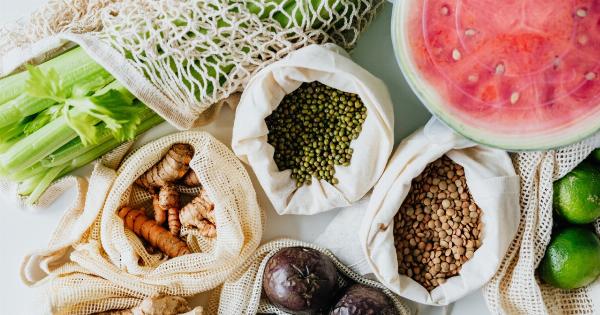Chicken is a staple food in many diets around the world. It is versatile, delicious, and packed with protein. However, improper handling and cooking of chicken can lead to foodborne illnesses, such as chicken poisoning.
To ensure your safety and the safety of your loved ones, it is essential to follow proper food safety practices when preparing chicken. In this article, we will discuss the importance of handling chicken safely and provide tips on how to protect yourself from chicken poisoning.
What is Chicken Poisoning?
Chicken poisoning, also known as salmonellosis, is a foodborne illness caused by consuming chicken or eggs contaminated with Salmonella bacteria. Symptoms of chicken poisoning may include diarrhea, stomach cramps, fever, and vomiting.
In severe cases, it can even lead to hospitalization or death, especially in young children, elderly individuals, and people with weakened immune systems.
1. Purchase Fresh and Quality Chicken
To reduce the risk of chicken poisoning, it is crucial to purchase fresh and quality chicken. Make sure to buy chicken from a reputable source, such as a trusted grocery store or a local farmer’s market.
When selecting chicken, look for firm, odorless, and well-packaged cuts. If the chicken appears slimy, has a foul smell, or has an unusual color, avoid purchasing it as it may be spoiled.
2. Practice Proper Food Storage
Proper food storage is essential when it comes to preventing chicken poisoning. Remember the following guidelines:.
- Refrigerate or freeze chicken as soon as possible after purchase.
- Keep chicken in the coldest part of the refrigerator, below 40°F (4°C).
- Store raw chicken separately from other foods in the refrigerator to prevent cross-contamination.
- If you don’t plan to use the chicken within a couple of days, store it in the freezer to maintain its freshness.
3. Thaw Chicken Safely
When thawing chicken, it’s important to do it safely to avoid bacterial growth. Avoid thawing chicken at room temperature, as it can allow bacteria to multiply rapidly. Instead, use one of the following methods:.
- Thaw chicken in the refrigerator: Place the wrapped chicken on a plate or in a container and let it thaw slowly in the refrigerator. This method may take several hours or overnight, depending on the size of the chicken.
- Cold water thawing: If you need to thaw chicken quickly, you can submerge the sealed chicken in cold water. Change the water every 30 minutes to ensure it remains cold. Cook the chicken immediately after thawing.
- Microwave thawing: If you plan to cook the chicken immediately after thawing, you can use the microwave’s defrost function. However, make sure to cook the chicken right away, as microwaves can partially cook chicken during the thawing process.
4. Practice Good Hygiene
Proper hygiene is crucial to prevent chicken poisoning. Follow these hygiene practices when handling chicken:.
- Wash your hands thoroughly with soap and warm water before and after handling raw chicken.
- Use separate cutting boards, utensils, and plates for raw chicken and other foods to avoid cross-contamination. Clean them with hot, soapy water after use.
- Never reuse marinades or sauces that have come into contact with raw chicken unless they have been thoroughly cooked to kill any bacteria.
- Avoid touching your face, mouth, or eyes while handling raw chicken to prevent the spread of bacteria.
5. Cook Chicken to the Right Temperature
Cooking chicken to the right temperature is essential to kill any bacteria, such as Salmonella, that may be present. Use a food thermometer to ensure chicken reaches a safe internal temperature of 165°F (74°C).
Insert the thermometer into the thickest part of the chicken, without touching the bone. Make sure to cook chicken thoroughly, especially when grilling, frying, or baking.
6. Avoid Eating Undercooked Chicken
Undercooked chicken can still harbor harmful bacteria, so it is crucial to avoid eating it. Cut into the thickest part of the chicken and check that the meat is opaque throughout, with no pink or raw areas.
Additionally, the juices should run clear instead of being pink or bloody. When in doubt, cook the chicken for a few more minutes until it reaches the appropriate internal temperature.
7. Store Leftover Chicken Safely
When you have leftover cooked chicken, it is important to store it safely to prevent bacterial growth. Follow these guidelines:.
- Refrigerate leftover chicken within two hours of cooking.
- Place the chicken in shallow, airtight containers to speed up the cooling process.
- Label the containers and consume the leftovers within 3-4 days.
- If you don’t plan to eat the leftovers within that timeframe, store them in the freezer.
8. Be Aware of Cross-Contamination
Cross-contamination is a common cause of foodborne illness. Follow these tips to prevent cross-contamination when handling chicken:.
- Store raw chicken in leak-proof containers to prevent juices from coming into contact with other foods.
- Use different cutting boards, utensils, and plates for raw chicken and other ingredients.
- Wash your hands thoroughly after handling raw chicken and before touching other foods.
- Regularly clean and sanitize kitchen surfaces, countertops, and utensils to remove any traces of raw chicken.
9. Teach Children about Food Safety
It is crucial to teach children about food safety and the potential risks associated with improper handling of chicken.
Encourage them to wash their hands before and after handling raw chicken, and to use separate utensils and cutting boards for raw and cooked foods.
10. Stay Informed about Food Recalls
Stay informed about food recalls and outbreaks related to chicken products. If there is a recall, follow the instructions provided by the manufacturer or health authorities.
Check the Food Safety and Inspection Service (FSIS) website or your local health department for the latest information.




























